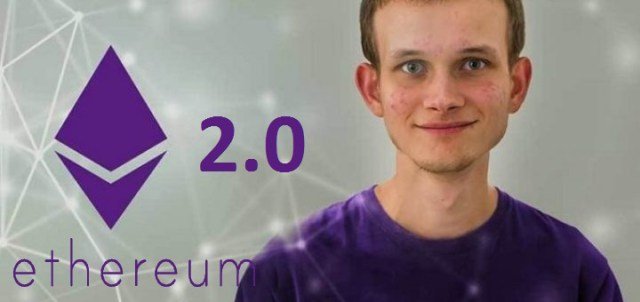
Developers of the Zilliqa project have identified the main differences of their project from other crypto-currencies. Zilliqa or Ethereum. Throughput: the indicator in the Ethereum block system is 10 tx / s. In the test network Zilliqa - 250 times more - 2500 tx / s. Moreover, Zilliqa has the potential of linear scaling using the number of nodes. The more nodes in the network Zilliqa - the greater the network bandwidth per second. Consensus: Ethereum uses PoW to reach consensus, ZILLIQA uses pBFT to reach consensus. PoW in ZILLIQA is used only to prevent the Sybil attack. Moreover, the established consensus can be applied to several blocks in a row, which is impossible in the Ethereum network. Smart contracts: ZILLIQA will also differ from Ethereum in terms of smart contracts. The main difference is that the base language for the ZILLIQA smart contract is not "turing-complete". Finality: The ZILLIQA consensus protocol gives the final result. This means that confirmation is not required. With the consensus on the basis of PoW in Ethereum, temporary forks can occur, which is why a certain amount of acknowledgment is required to protect users from double spending. Scalability: Ethereum does not yet know how to make PoS a reliable algorithm for further development and scaling. ZILLIQA has another approach with the use of sharding for accelerated scalability. Mission: mission ZILLIQA - support for high-performance decentralized applications that need to use the core properties of the block: openness, accountability, transparency, etc. ZILLIQA will concentrate on supporting such applications, which require high bandwidth and processing of a large amount of information. Existing applications based on Ethereum can benefit from ZILLIQA, but ZILLIQA developers do not expect that there will be many.

ZILLIQA vs Ethereum 2.0 ZILLIQA vs Ethereum 2.0 ZILLIQA creates a network or transactional fragmentation (shadding). For example, imagine a network of 1000 nodes. ZILLIQA will automatically divide the network into 10 fragments (shard) of 100 knots. Each fragment can process transactions in parallel. If each shard is capable of processing 100 transactions per second, all together they can process 1000 transactions per second. The parallel processing capability due to this architecture ensures that the throughput of ZILLIQA will increase linearly with the size of the network. Ethereum is currently studying the issue of how to separate the block so that storing and storing information does not become a problem in the long term. Ethereum 2.0 is a research project in which many problems remain unresolved. Phase 1 in Ethereum 2.0 (still incomplete) is a solution based on the main protocol (sidechain) that is linked to the main chain Ethereum with the help of the "contract managing the validators" (VMC). VMC is in the main chain of Ethereum and supports the system of shading. In other words, this contract is responsible for key tasks, such as adding a new validator, assigning a new validator to a fragment, and so on. According to ZILLIQA developers, Phase 1 of Ethereum 2.0 is a simple solution that does not solve all the problems associated with shading. They believe that such a solution will have the following problems: Single point of failure: it seems that the VMC can become a problem and a single point of failure, because the key stages of the protocol are inextricably linked to the VMC. Any VMC error can result in a system crash. ZILLIQA does not have any central unit or contract that the entire system relies on. Finality: Ethereum 2.0 (Phase 1) does not ensure the final state of the system. ZILLIQA, in turn, provides this state thanks to its pBFT protocol. Bandwidth: it is stated that Phase 1 will increase throughput by about 100x. Bandwidth ZILLIQA with a modest network size of 3600 knots = 250x bandwidth Ethereum 1.0. The connection between shards (fragments): it seems that Phase 1 will not provide the proper connection between shards. This means that a smart contract that requires the call of another smart contract in a different fragment may not work.

ZILLIQA vs Plasma / Raiden Plasma is a solution based on the backbone, while the Raiden Network is an off-the-shelf solution to the scalability problem. This means that not all data falls into the main chain of Ethereum. However, the proposed options may not provide security, sustainability, and decentralization as a fully scalable solution. Moreover, these solutions do not allow the main circuit to be scalable. ZILLIQA, in turn, is a chain solution and does not rely on any side chain (or off-chain solution) to provide scalability and, therefore, does not sacrifice security and decentralization. Any such solution (be it an off-line, or using a sidechain) can be integrated into ZILLIQA if necessary, to further increase throughput. ZILLIQA vs EOS

ZILLIQA vs EOS The high throughput of the EOS platform is achieved through its dPoS protocol (delegated by PoS). The network selects the necessary node from the 21 nodes. The probability of selecting a node depends on its share in the EOS. This mechanism can provide a fairly high throughput. However, there are also vulnerabilities. For example, 21 is not a very large number, so there is a probability of attack on the nodes (or rather, a sufficient number of them). An obvious solution may be to increase the number of nodes, say, to 100. But this will increase the average waiting time, and the bandwidth will fall. This will be due to the fact that each node needs time to broadcast the block to the network. Another problem with such a small number of nodes may be a decrease in the level of decentralization. Moreover, dPoS does not provide the principle of finality. This means that a malicious node can create a competing block. Thus, additional confirmation (as in Bitcoin) is needed to prevent double spending. ZILLIQA uses a different consensus protocol called pBFT. The advantage of pBFT is that it ensures the finality of the process. Consequently, confirmation is not required. The consensus protocol in ZILLIQA is run in parallel in 60 nodes - this is a large enough number to risk the centralization was low.

ZILLIQA vs Rchain There are three main differences between ZILLIQA and Rchain: Consensus protocol: ZILLIQA uses pBFT to reach consensus, while Rchain uses Casper PoS. The advantage of pBFT is that it assumes a Byzantine controversial model, whereas PoS assumes a crypto-economic model of competitiveness. Thus, for any object with a share in the network, there is virtually no incentive to attack the system because of its own interests. From this point of view, pBFT is safe in a much more hostile model. In addition, pBFT provides the principle of finality, unlike PoS, where finality is only potential and, as a consequence, confirmation is necessary. Parallelism: in Rchain, the parallelism is at the node level. In ZILLIQA, it is at the network level. However, Rchain has a potential solution that can be used to provide parallelism at the network level. The language of smart contracts: Rholang (the language of smart contracts in Rchain) is turing-complete and, therefore, allows unlimited recursion, while the language of the ZILLIQA smart contracts is not complete in Turing, so it allows only limited recursion. Also, analysis and proof of security properties using formal methods in ZILLIQA is much simpler than in Rholang. Source: hyipstat.top
great read! thank you for providing this information
thanks you
Is it Shadding or SHARDING?
Here's our take on Zilliqa: https://steemit.com/cryptocurrency/@harpooninvestor/zilliqa-zil-the-new-and-improved-ethereum-of-singapore-yawn